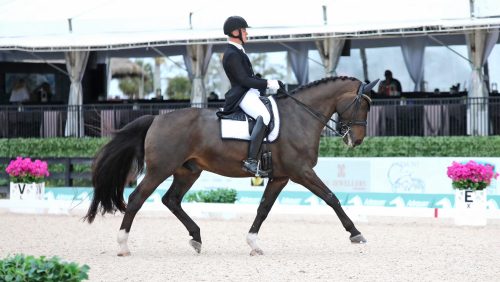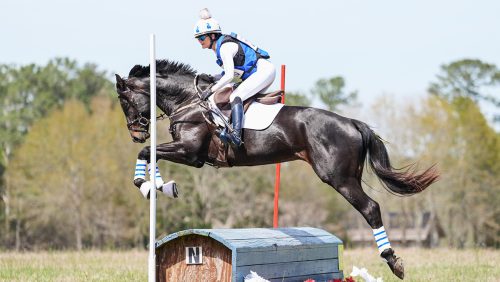Clinics are a wonderful way of getting a fresh perspective into a rider’s normal training program. I’ve been on both sides, both organizing clinics for others at my own farm and teaching clinics elsewhere. In years of organizing them, I’ve learned to appreciate the difficulty of the job, and now have some rules and regs about how I organize my clinics. And in years of teaching them, I’ve come to appreciate some things that other organizers have done to make my time with them a pleasure. In all my years of teaching them, I’ve never had a bad clinic experience. Lucky me!
When I organize a clinic, I try to remember to ask my clinician a few basic questions: what do they like to eat? Do they drink anything through the day of the clinic—coffee, tea, water? How do they take it? And how do they like their clinics scheduled? Some clinicians like a 15-minute break every few riders, or a longer lunch break, or something else. When Michael Barisone comes and gives clinics for us, he drives down the morning of the first day, so we start late, and then start early on Day 2 so he can drive home at a reasonable hour.
I also ask my clinician about meals and crowds. Some clinicians like a quiet dinner, or to take lunch more privately rather than with the crowds. I’m not one of those people—I’m a social butterfly—but I can understand that desire, and I can assure you it’s not out of ego. Teaching 10 lessons a day, talking during lunch and dinner for two days… it can be a lot for one’s vocal cords!
Another thing I remember to tell the clinicians I host: we have a sound system they can use (or not). When I teach clinics myself, I have a system of radios and a little speaker I can bring along, because I’m one of those ones who does require some sort of sound system or I’ll lose my voice. If you host a clinician, and bring in a sound system special for the event, make sure to test it first!
I just got new little radios for mine, and they weren’t set up properly for my last clinic; I had to Google the instructions on how to reset them all during the lunch break on the first day (about which my hosts were very gracious; thanks guys!). I personally bring both a speaker that can project my voice to the auditors and a headset that allows me to talk directly into my rider’s ear. If you’re going to ride with a clinician and you know your ears are a funny size or don’t work well with the standard headsets, it might not be a bad idea to bring your own.
And speaking of things for riders to bring: wear a belt. For me it’s not about your turnout (though it can’t be denied that a belt does look sharp, and some clinicians do care about such things). It’s about a place to clip a radio like the ones I use. Trying to figure out a pocket or belt loop (they never stay put!) is time consuming and takes away from your lesson!
ADVERTISEMENT
I’m always so appreciative when the clinic provides me with a list of at least the riders’ names. I’m one of those people that’s useless with names, not to mention that everyone looks the same with a helmet on, so it’s great to have a list. When I host clinicians at my farm, I also give them a brief bit of biographical information, mostly the horse’s age and what level they’re schooling or showing.
But it’s nice to hear, when teaching a new person, a very brief bit from the rider themselves about what they’re working toward, and whether or not they work with a coach on their own. Sometimes I give clinics for individual trainers and the lion’s share of the riders are their own students (that’s how clinics work at my house as well), but sometimes I give them for clubs, and then there’s a broader range of riders, including some who don’t often get coaching, and some who are professional riders. It’s also really important that a rider who has a health issue, or whose horse has some sort of health issue, to tell the clinician this in advance.
Any good instructor knows that when it comes to giving a clinic, it’s teaching a rider once or twice and then bugging out, so we have those two lessons to make an impact, without introducing so much that we leave you with unanswered questions. So riders, give your clinician’s way a shot, and then remember that your clinician is just one person giving you her opinion, and you can take it home with you, or not, or incorporate it into your own work. Whenever possible it’s great for you to have your own coach come with you to the clinic, to help you make the most of it.
Take notes. Keep the donuts way from your clinician (please, I have no willpower, it’s awful). And enjoy your next clinic experience!















